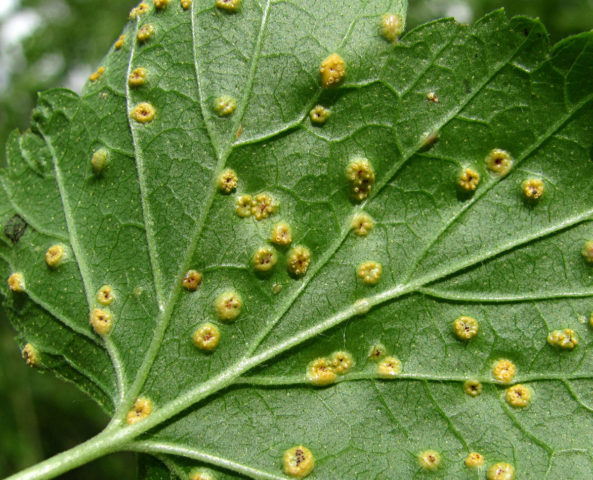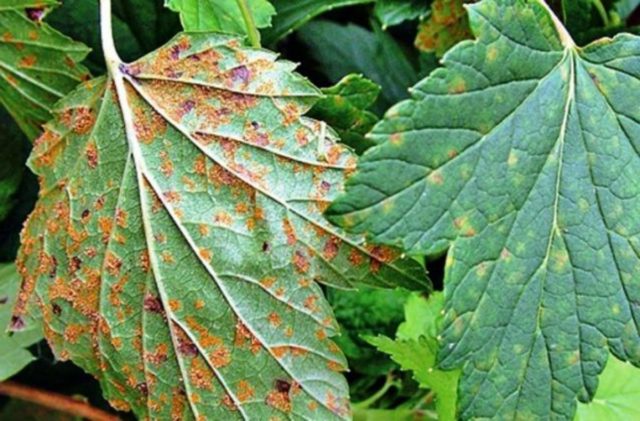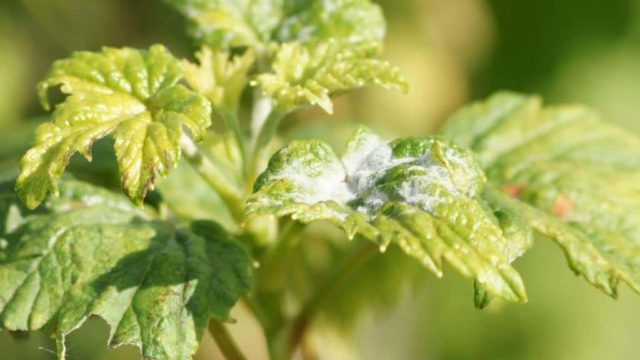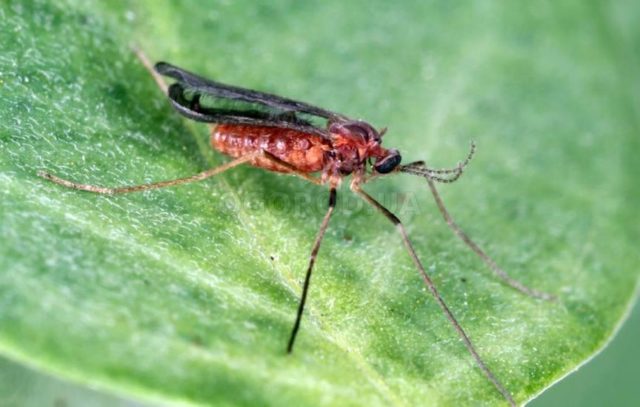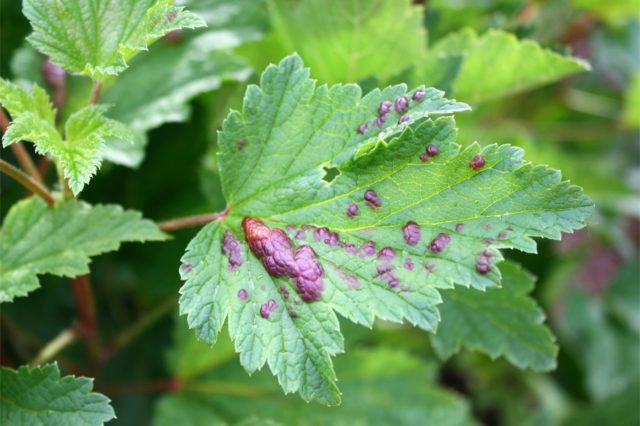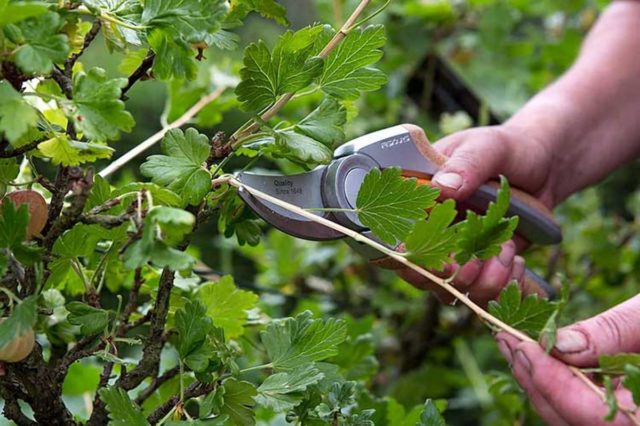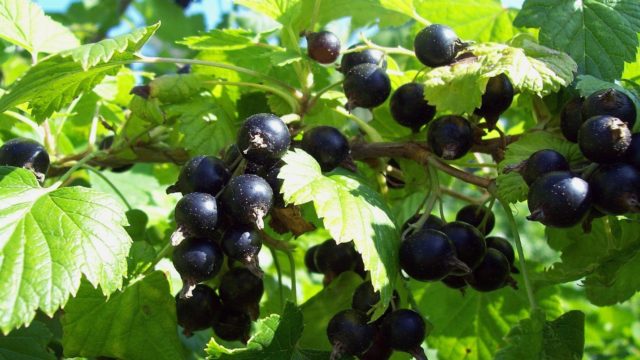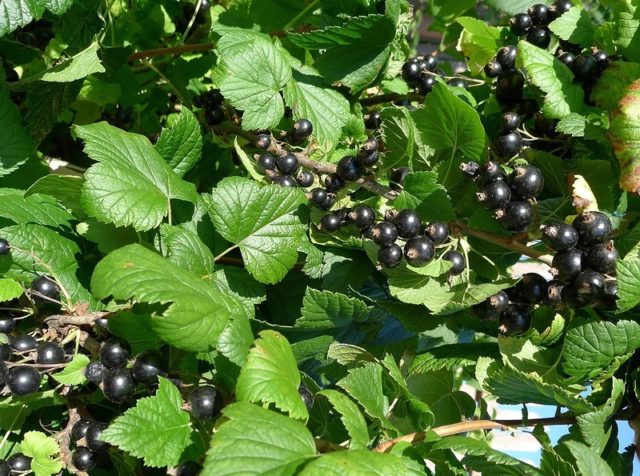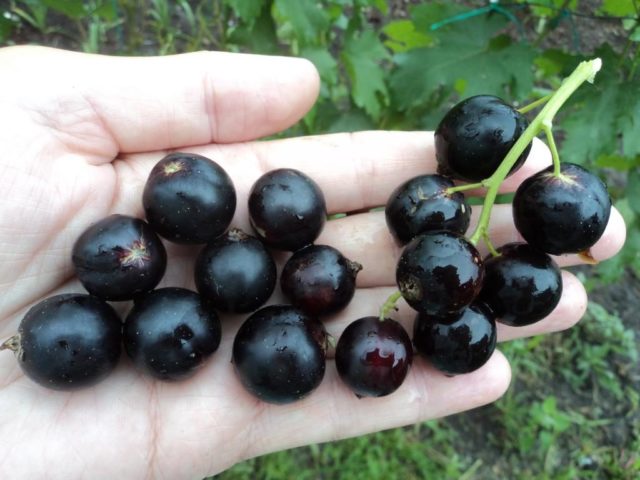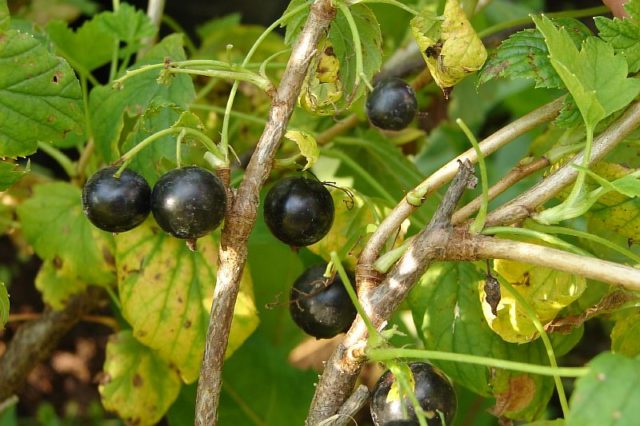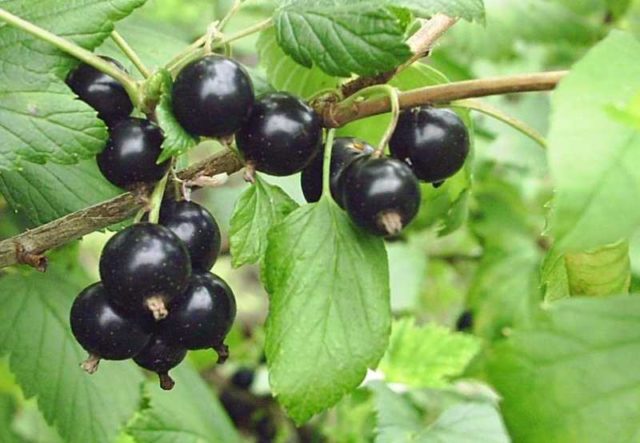Content
Black currant is rightfully considered the favorite of gardeners. Its berries are a valuable source of vitamins (C, B, P) as well as minerals and organic acids. The main feature of the fruit is to preserve up to 80% of vitamin C in its juice even after six-month storage. That is why currants have won universal love. This shrub is unpretentious to care for, but sometimes it is affected by rust. The disease is caused by fungi. Ugly brown spots from leaves quickly spread to different parts of the plant, which leads to dehydration and death of currants. You can remove rust on currants in many ways, but the main thing is not to start the disease.
Varieties of rust
To many gardeners, currant rust seems the same. But there are several types of this disease. Each type has its own differences and the time of damage to the plant.
Rust on currants can be:
- Goblet. At risk are currant bushes growing near conifers. The spores of the fungus first settle on them: they fall on the branches and eventually penetrate under the bark, where they begin to multiply. In the spring, the bark is covered with growths in the form of bubbles, which turn into red spots. And then the currants are also affected by spores. Goblet currant rust (pictured) is carried by wind and insects. The most dangerous time begins in May and lasts until the first half of June.
- Columnar. Yellow spots appear on the upper part of the leaves, and on the reverse side, the leaf plate is dotted with orange specks, in which the spores of the fungus are collected. You should be especially careful in July and August.
Causes of rust
A humid and warm environment is a beneficial environment for fungus. If the summer is dry, currants are rarely rusty. The disease spreads rapidly in low-lying areas with dense plantations.
Sources of rust spores can also be:
- Leaf aphid. The inside of the leaf is covered with microscopic black dots. Insects suck the sap from the plant, depriving it of its vitality. The leaf plates are covered with brown tubercles. Bushes slow down in growth and soon die.
- Spider mite. The pest also settles on the leaves. Gradually, they become covered with rust colored blisters. The disease discolours the leaves, and they crumble.
- Currant gall midge. This pest lays eggs on currants. Soon, rust spores attack the entire shrub.
Signs of rust on black currants
The condition of the bushes must be carefully monitored. Regular inspection of foliage and branches can quickly identify rust spores without giving them a chance to spread to the entire plant. Warning bells are yellowing of currant leaf plates, the appearance of red spots and stripes on them.
Why is rust on currants dangerous?
In the cold season, the pathogen does not manifest itself. Spores hibernate near the currant bush, without manifesting in any way. When the weather becomes humid and warm, the fungus is activated. Rust gradually affects the entire bush completely.
The harmful effect is manifested:
- Abundant loss of leaves.In summer, the plant loses ¼ of its crown, and in autumn the leaves fall off completely.
- New shoots practically do not appear.
- The yield is halved.
- The bush's immunity is greatly weakened. The plant becomes vulnerable to disease and frost.
- Without proper treatment, the currants cannot be saved.
How to deal with rust on currants
A disease noticed in time is a guarantee that the bush can be cured. Various remedies are used to treat currant rust. Specialty chemicals are sold in stores. But you can also use the old folk methods.
Chemicals
The following remedies help to cure currants from rust:
- Previkur (15 ml / 10 l of water). Popular fungicide with broad action. The drug protects not only from rust on white currants, but also from root rot. In addition, it acts as a powerful growth stimulant and strengthens the immune system. Water is poured into the preparation in a thin stream and mixed well.
- Speed Refers to contact fungicides. It is used for preventive purposes, as well as for the treatment of both indoor and garden plants. The tool is convenient because it can be used even at the stage of flowering or fruiting. It fights rust most effectively at an early stage. Before use, Skor is diluted in water (2 ml / 5 l).
- Fitosporin. It successfully fights against any kind of fungus and bacteria. Available in paste, powder or liquid form. The drug does not affect the fruit ovary and its quality. To prepare a solution for currants, you need to dilute 5 g of the substance in 10 liters of water. Treat currants from rust on the leaves only when there is no sun. Under the sun's rays, the active ingredient quickly disintegrates.
- Topaz. The drug inhibits the germination of rust spores, which means that the fungus is not capable of further reproduction. The composition is quickly absorbed and can be used in rainy weather. It is also resistant to high temperatures. To prepare the solution, you will need a 10-liter container of water and 4 ml of the product.
- Bordeaux liquid. The most effective measure in the fight against rust on red currants. It is an aqueous solution of calcium hydroxide and copper sulfate (100 g of each substance + 10 liters of water). This composition is sprayed on bushes during budding. The procedure is carried out only 3 times with an interval of three weeks.
- Cuproxat. This drug is classified as copper. Perfectly fights against fungi, penetrating spores and destroying them. For 10 liters of water, take 50 ml of the drug and spray with this solution.
Treatment of currants from rust in the spring has its own characteristics. To get a positive effect, you need to follow some rules. So, all parts affected by the disease are cut off from the bush. Branches and leaves should be immediately piled up and burned. Otherwise, spores will penetrate the ground and re-infection will occur. Holes must be made in the soil to drain excess moisture.
Traditional methods
Those who have a negative attitude to chemicals try to get rid of rust on currant bushes by such means:
- Baking soda. Powder (2 tbsp. L.) Is combined with liquid soap (3 tbsp. L.) And stirred well in 5 l of water. When all the components are completely dissolved, the liquid is poured onto the bush.
- Manure. The common mullein is also used as a rust-fighting agent. A 10-liter bucket is filled one third with manure and completely filled with water from above. The mixture is infused for three days. After it is diluted in a ratio of 1:10. The solution is ready for use.
- Garlic. A glass of peeled cloves is poured into 2 liters of water and left for three days. Next, the solution is filtered and sprayed with currant leaves. It is also useful to plant this crop near currant bushes. The essential oils in garlic ward off many pests.
- Dairy products. Homemade whey, kefir or yogurt will do. For 1 part of dairy products, there are 10 parts of pure water. Processing is carried out only in the evening or on cloudy days.
Agrotechnical measures
There are different ways to protect currants from rust on the leaves. First of all, you should not plant bushes in the immediate vicinity of conifers. The second step is to get rid of the sedge in the area. Approximately 0.5 km of adjacent land should be cleared. The soil should always be sufficiently loose and well-groomed.
Preventive actions
The best remedy for combating rust on currant leaves is prevention.
A number of simple actions will help keep currant bushes healthy:
- The foliage that has fallen from the bushes must be burned immediately.
- The area around the currants must be regularly cleaned of weeds.
- Loosening of the soil is carried out about twice a year.
- In autumn and spring, the earth must be dug up.
- Shoots that are more than five years old are pruned. The cut sites are treated with special antiseptic agents.
- A complex of fertilizers saturated with potassium and phosphorus will help strengthen the plants.
- Until the buds have blossomed, you can heat the currants. 3 liters of boiling water, poured onto the bushes, will become reliable protection against various types of fungi.
Resistant varieties
There are some varieties of currants that successfully resist rust:
- Katyusha. It is a tall, medium-branched bushes with pubescent leaves. The berries are large and tasty, with few seeds. The skin is firm and glossy. The variety is resistant to diseases and frost, gives high yields.
- Grace. Differs in juicy tasty fruits and early ripening. This variety has strong immunity and is rarely affected by pests (powdery mildew and kidney mites).
- Black veil. Tall bushes, decorated with a scattering of beautiful large berries. Fruits ripen early and tolerate drought well. Currant pleases with a plentiful annual harvest.
- Belarusian sweet. Globular bushes look very aesthetically pleasing. Every year, basal shoots come from the base. In mature shrubs, powerful roots grow. Fruits tend to change color: from a greenish tint to a deep purple tone. The taste is sweet with a pronounced sourness. The fruits are resistant to diseases and pests. They should not be allowed to over-ripe.
- Semiramis. It is appreciated for its very large and tasty berries. The shrub is not affected by rust and is resistant to powdery mildew. It will delight you with excellent harvests and incredibly large fruits reminiscent of cherries.
The listed varieties are hybrids. Initially, they have strong immunity. Plants are often weakened by care errors and become easy prey for pests that carry fungal spores. You can get rid of them in any of the ways described above.
Conclusion
The easiest way to remove rust on currants is with chemical preparations. Modern means effectively destroy fungi without harming the crop. The berries remain clean and do not lose their properties. Some gardeners are skeptical about chemicals. You can also deal with rust using natural remedies. The main thing is to choose the safest and most effective of the offered assortment.
Currant is a real healer. It helps to resist colds, has a beneficial effect on the heart, blood composition and lymphatic system. The leaves make a delicious and invigorating tea.You can only get the maximum benefit and taste from healthy bushes. Proper agricultural practices and careful soil care will help protect black, white and red currants from rust on the leaves.

